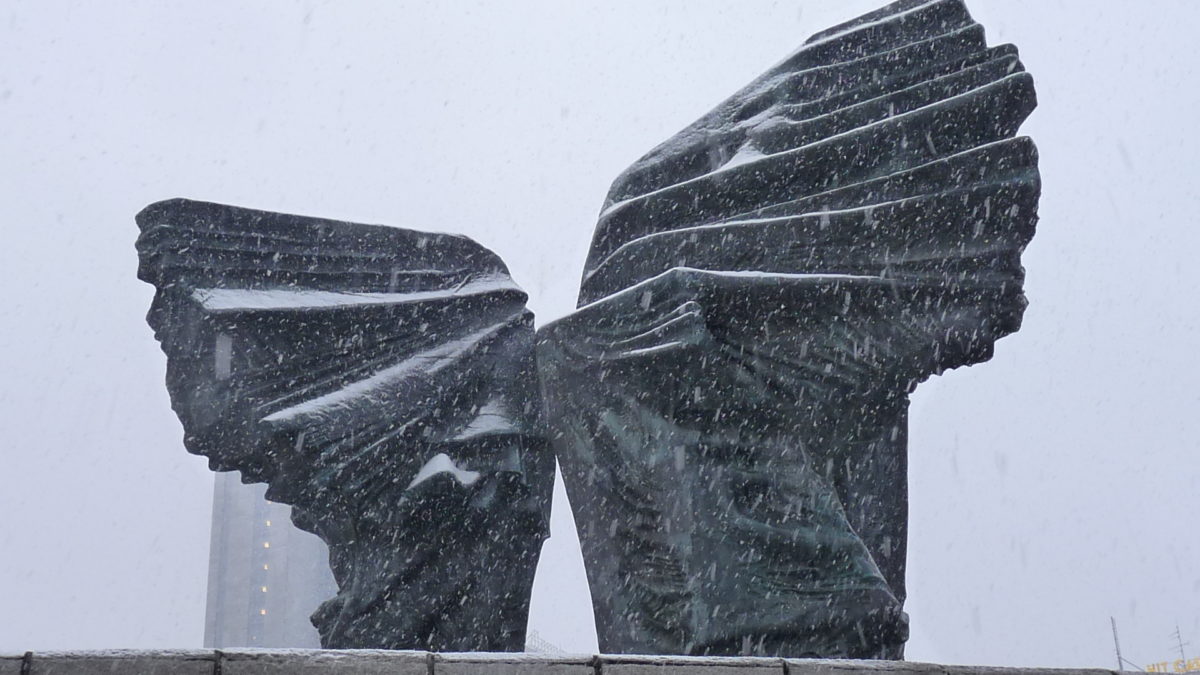That's all folks
And with that final huff of solar indignation, I shall flounce out of the venue and head to my Bytom apartment. It was chicken nuggets last night so maybe today is KFC Tuesday.

BEIS spokesperson says 'strong and consistent policy' approach is vital for investment
Here's one for the comments section. It would be lovely to here the thoughts of the U.K.'s Solar Trade Association on the comment by BEIS representative Zoe Norgate that “we know the importance of strong and consistent policy signals” to attract private sector investment.
In fairness to the Deputy Director for International Climate Finance Policy and Investments at BEIS, she did add: “we haven't always done that, and we have learned lessons”.
‘Strong and consistent signals'? There are wonderful echoes of Prime Minister Theresa May's plan for a ‘strong and stable' approach to Brexit negotiations there. How's that working out?
A strong and consistent U.K. solar policy
But I'm being a particularly mischievous journalist here – Monica Frassoni would be waggling a finger. Ms. Norgate went on to reel off an impressive list of U.K. financial backing for climate related investment in India, including British funding for the Bhadla Solar Park via the Climate Technology Fund, and also revealing BEIS is working with the Solar Energy Corporation of India on the roll out of battery storage and floating solar, as well as on the introduction of ebuses in Banglaore.
Will India's solar rooftop target slip?
Your fearless pv magazine correspondent pulled aside Tata Cleantech Capital's Mr. Patel to ask him how realistic India's solar rooftop aim is.
With household PV accounting for just 3.4 to 3.5 GW of capacity at present, the government's target of reaching 40 GW of such installations by 2022 appears hugely ambitious.
Mr. Patel acknowledged the scale of the challenge, and said: “Maybe we might only reach 15 or 20 GW in that time, but that would still be a big step forward from where we are now.”
People's Vote campaign gets a COP endorsement
In the India pavilion, we've switched to the topic of financing renewable energy and green bond proponent Sean Kidney, CEO of the Climate Bonds Initiative, has just dropped a bombshell.
Discussing the aggressive moves being made by the EU to create green finance and the demand for it outside the bloc, he added: “This is also true of Great Britain, which is still part of the EU [he resisted the temptation to check his watch] and which I expect will remain part of the EU, but let's leave that to one side for now!”
You read it here first folks. Although it may have been for the benefit of Zoe Norgate, a representative of the U.K. Department for Business, Energy and Industrial Strategy.
Britain, of course, is keen to build bridges with India as a trading partner as Brexit looms… despite Mr. Kidney's prediction.
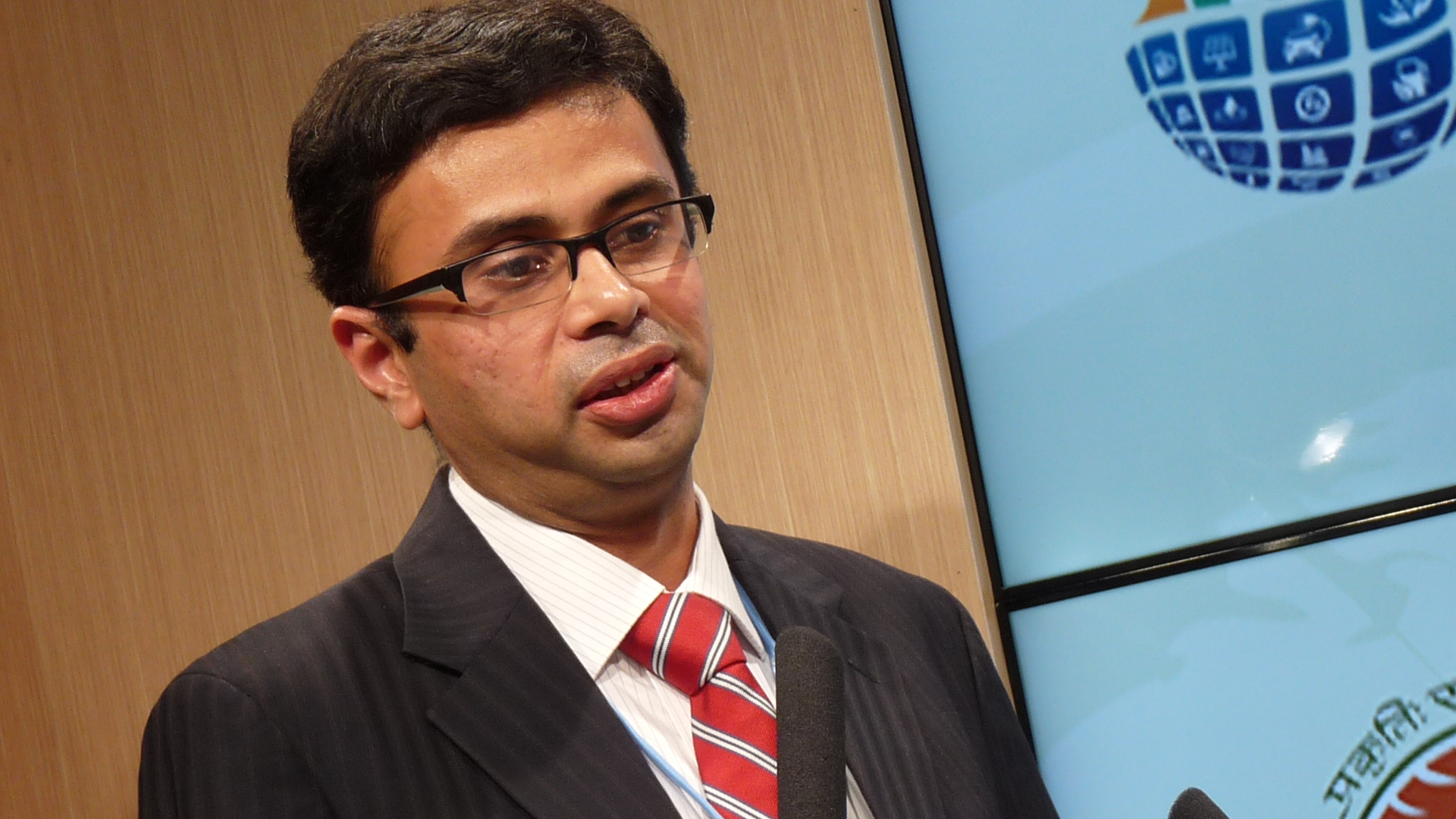
Raising the roof
I'm back in the open-plan India pavilion, with its really challenging acoustics as noisy crowds pass an area that is not sealed off.
Rupin Dushyant Patel, Associate Vice President of Tata Cleantech Capital Ltd has just closed a brief presentation on the potential of solar rooftops in India, which it is said – by the chair of this panel, at least – could supply the lion's share of 1 million solar jobs in the nation.
In listing the problems which have limited the expansion of rooftop solar in India – including monkeys – he discussed the differing nature of offtakers, compared to the more established ground mount solar energy users.
“You have a very different offtaker profile,” said Mr. Patel, “they are small and medium sized businesses, mall industry and individual units. How do you come up with a bankable structure? That's something which we're very much conscious of and which we've been working on.”
The architect's sketch
However, the lag as my battery recharges does give me the opportunity to touch upon what was an interesting presentation by architect David Nelson, of Norman Foster's Foster + Partners.
You will recall, Mr. Nelson was speaking as part of an EU presentation on energy efficiency and the like, and he showcased the work Foster + Partners is doing to truly reduce the carbon footprint of its buildings, rather than just considering solar panels – despite the efforts of those dastardly project managers, see below – and the building's ‘operational energy'.
Mr. Nelson explained there are around 250 sets of environmental building guidelines applied around the world so the first thing his firm had to do was examine all of them and see how effective they really are.
He said he was shocked to find that even the most well-respected standards bodies, such as LEED (Leadership in Energy and Environmental Design) and BREEAM (Building Research Establishment Environmental Assessment Method) – the latter started by a keen angler – had codes that would fall short of the Paris climate change goal even if every building on earth was subject to their best standards. They were quite upset to be told that too, added the architect.
Having established the existing building codes were not enough, Foster + Partners had to come up with a new method of quantifying a building's true carbon footprint, and did so using the huge data bank provided by Global Footprint Network Data, which logs the environmental performance of governments, industries and all manner of other emitters.
The data was translated with the help of The Footprint Company which, with the Royal Institute of Chartered Surveyors on board, came up with an accurate measure.
Key to Foster + Partners' approach, Mr. Nelson explained, is working to reduce the embedded energy in a building's materials – comprised of the carbon footprint of each material's supply chain. That, said Mr. Nelson, is far more important than a building's ‘operational energy', such as the amount of energy its heating and cooling systems use.
So, the steel in a building, due to the nature of its production, shipping and other factors, occupies a large slice of its carbon footprint, even though concrete makes up a larger proportion of the construction materials by volume – 89% in the Fosters-designed skyscraper Mr. Nelson used as an example.
The most surprising revelation, to the audience at least, was that it is the fit-out of the building – the carpets, desks and furniture – that is the most carbon intensive part of a structure. Something to bear in mind the next time you go carpet shopping.

Back in black
It will come as no surprise to learn that, after lunch, I've ended up back in the almost empty conference room where I first arrived yesterday.
It's become obvious this is a fairly little known haunt for beleaguered journalists yearning for a quiet corner or, in my case, a socket.
At least this time there is no pretense of any presentation being staged – I think I just missed one. It's just myself and seven other lonely souls seeking refuge from the crowds on the other side of the door. Mind you, this discovery does make me feel even more sympathy to the folks presenting in here, on what may be the most high-profile event of their careers.
The clock is ticking
John Christensen, on the UN Environment Program, warmed to the same theme, stating: “We simply can't wait. There's no way we can wait until the mid 2020s because it's simply not possible.”
Mr. Christensen highlighted the advances made by solar in the past decade as a shining example of what renewable energy technologies can achieve before adding, of the Paris climate agreement: “It's technically possible and it's also financially possible.
“It's a question of bringing government and non-state actors together.”
It was another impressive statement of intent which makes it feel like the politicians buried in their closed sessions might be stepping up the tempo as Friday's close looms.
A questioner has done his best to burst the bubble of optimism, by voicing his feeling India is unfairly described as under-achieving in climate ambitions and asked the German member of the panel, Rita Schwarzeluhr-Sutter, whether Germany would consider cancelling the Nord Stream gas pipeline that imports energy from Russia.
She's responded by pointing out Germany needs gas as a bridge fuel after it agreed to phase out nuclear and is now preparing to phase out coal.
And on that note, and with my electrical and personal storage running low, I think it's time to grab something to eat before discovering what delights await this afternoon.

'Martin' offers hope
In one of those happy accidents that can occur to people stumbling blindly around the COP venue, I seem to have stumbled upon one of the day's big draws, a press conference to publicize the UN's Emissions Gap Report 2018.
However, I can't stay long, my laptop battery is conspiring against me.
We have just heard a powerful speech from a gentlemen whose desk name sign has him as Lucas di Pietro – but I don't think it's him, partially because the chair has just referred to him as ‘Martin'.
Anyhow… ‘Martin' said: “Everybody who now has a brain now understands this is real and this has to be fixed within a decade. We don't have any more time now. We've wasted many decades debating whether climate change was real, was man made etc.
“One or two degrees can sound like a typical politician's figure, like a reference to degrees of inflation but we risk to go to tipping events where we have runaway climate change and it's out of our control to do anything at all.”
Martin – the journalist next to me also has ‘Martin' written on his report, which is reassuring – closed on a positive note, comparing the need to limit emissions rapidly with the U.S.' moonshot program. A dream achieved despite the technology not existing when the aim was announced.
Amen to that.
Jobs for jobs
Asked by pv magazine how the Alliance can promise new renewable energy jobs will go to formerly coal-dependent areas, Hans Josef Fell, the Energy Watch Group President said the group can only give an overview and that it was down to politicians to ensure that happens.
That is an entirely understandable response but surely not one that would reassure skeptical voters in areas like this, Poland's coal belt of Upper Silesia.
Mr. Fell stresses Germany has already gone through ructions thanks to the energy transition in its coal mining areas, although his argument rather falls down when he says: “We've had already this transition in eastern Germany and the opposition of the coal industry led to the situation that Germany lost the industry in solar power and China was happy to win it.”
Surely China's pre-eminence has rather more to do the availability of cheap labor and state support?
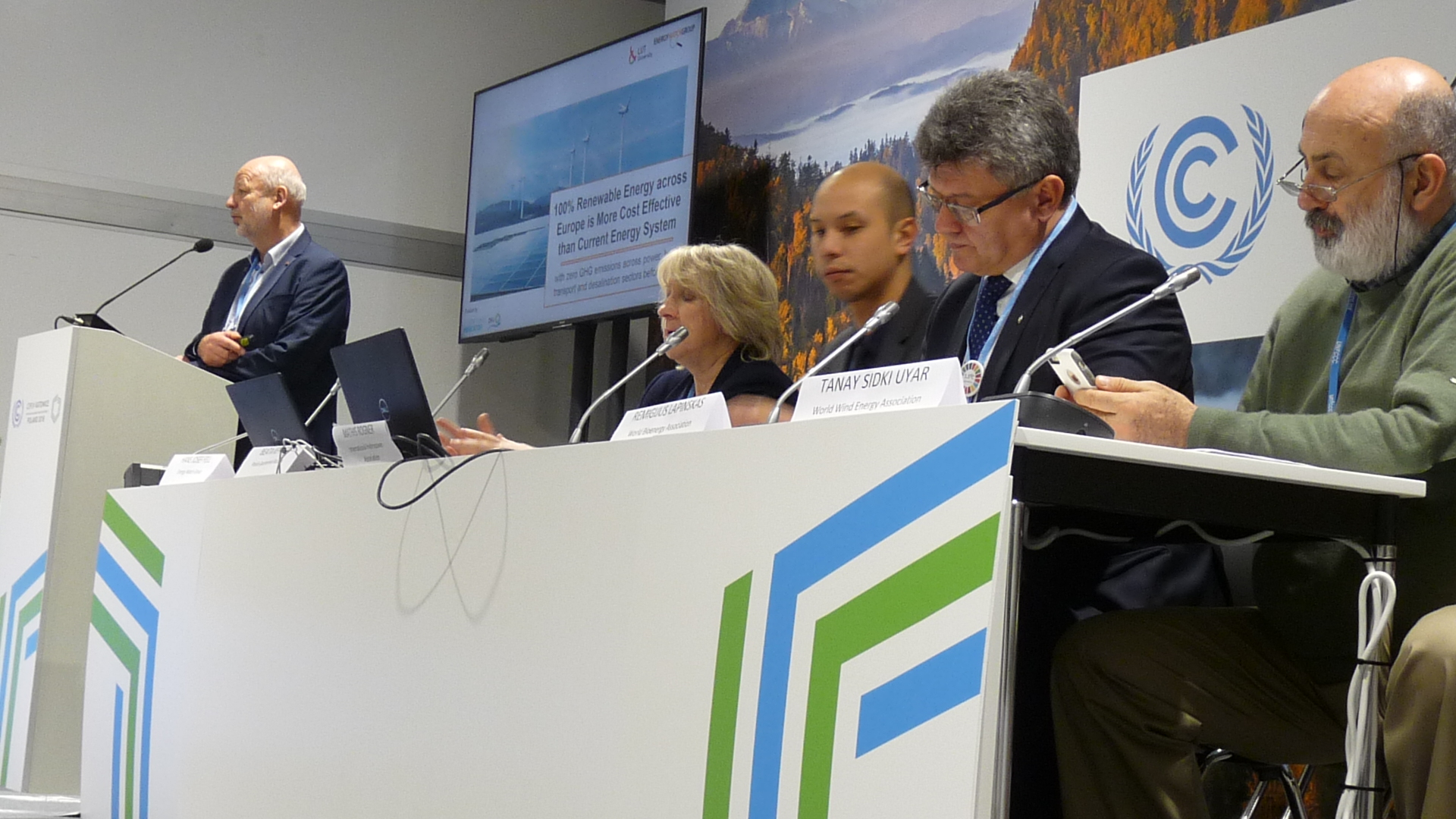
We back the report but...
This RENAlliance gathering is also illustrating the difficulties of finding a united voice among competing renewable technologies.
There is a certain inevitability about the comments of the panel's representatives from the geothermal and bioenergy sectors, perhaps not surprisingly given the mealy mouthed less-than-3% the report says they will supply to the EU energy mix in 32 years' time.
Beata Kepinska, of the Polish Geothermal Society, said the “potential for geothermal is much higher than reflected in the study”.
Remigijus Lapinskas, of the World Bioenergy Association, said the report he is here to publicize should “contain more space for different scenarios”, no prizes for guessing which ones.
He goes on to press the case for sustainably sourced bioenergy, with the argument: “I hardly believe we can drastically change the energy system of the world to be based only on electricity.
“Transportation, in most cases I hardly believe electricity will run the ships on our oceans… our aircraft, or long distance trucking.”
Where's the sun?
Curiously, given the weight given solar in the report – which is due to be published at 6.30pm tonight – there is no representative from PV on the RENAlliance panel.
But at least Mathis Rogner, of the International Hydropower Association, has done the decent thing by mentioning the potential of floating PV on the world's reservoirs.
He also remarked upon an 850 MW PV plant in China “that was pretty much made possible by coupling it with a hydropower project”.
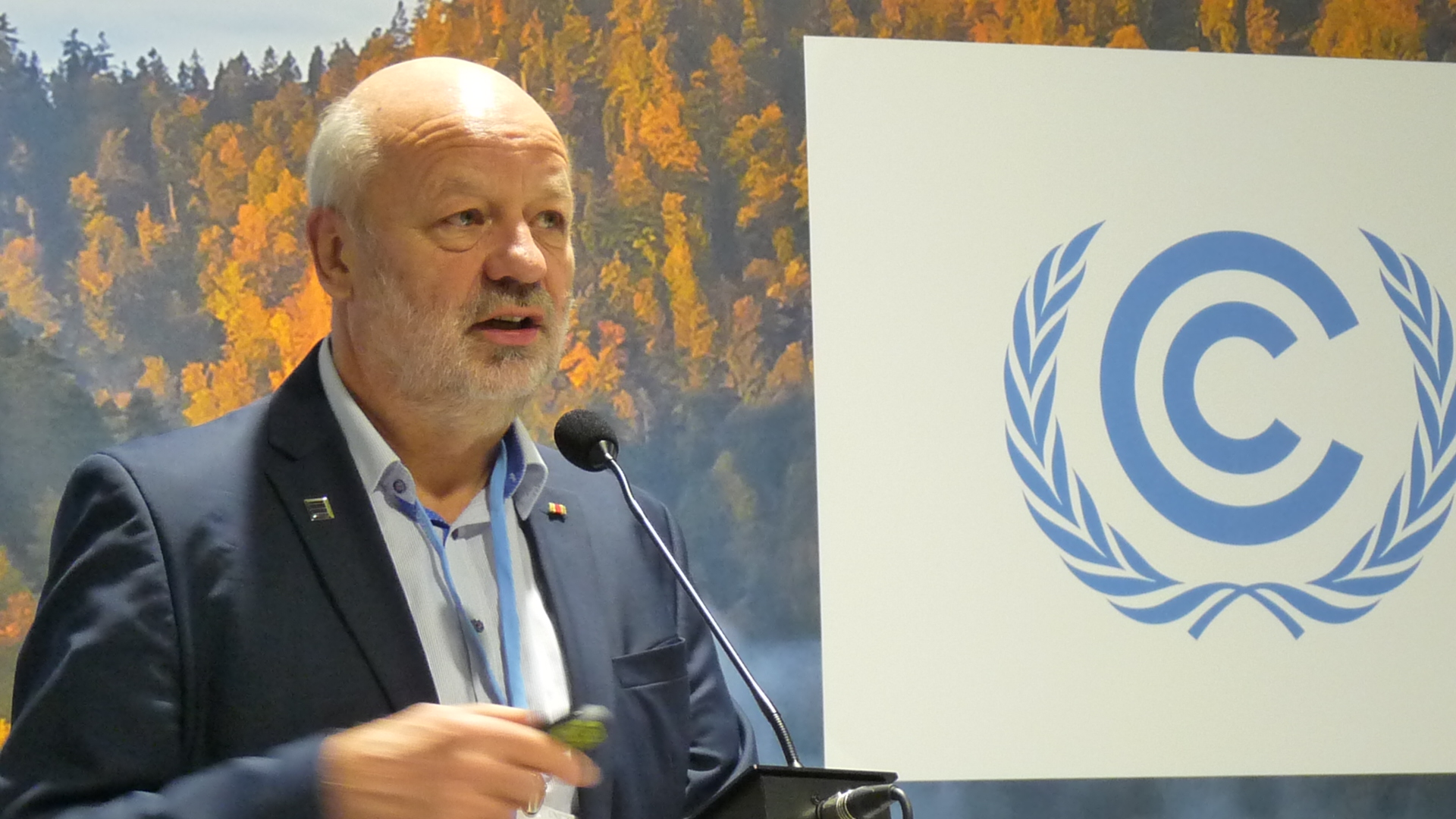
A tour de Fell
With a hop, skip and a jump, I'm here at the RENAlliance, for the launch of a study by the Energy Watch Group and Finland's Lapeenranta University of Technology that proposes a 100% renewable energy system in Europe by 2050 is not only possible, but cheaper than the status quo.
And guess who is the winner? The Alliance, which is made of representatives of five renewable energy bodies, estimates 62% of Europe's renewable generation by 2050 could come from solar, with wind supplying 32%, hydro 4%, bioenergy 2% and geothermal less than 1%.
Presenting the study, Hans Josef Fell, says of the Alliance's members: “They want to oppose Trump's climate denying, and make it more climate protection.” Finally, a criticism of the absent U.S. President.
The claim renewables would be cheaper than fossil fuels is based on the cost of extracting natural gas, mineral oil, coal and uranium. Although Mr. Fell is obliged by the nature of the presentation to be brief, that's a claim I'm sure would prompt howls of derision from the fossil fuel lobby – more details please.
The speaker's explanation of how to win over politicians – not least in Poland – concerned about the loss of coal mining jobs also seems suspiciously glib. Mr. Fell's figure of 1.5 million jobs being created by the renewables industry under the report's 2015-2050 modelling is probably correct, but to simply state that more than compensates for the loss of the existing 800,000 coal mining jobs in Europe is surely a crude oversimplification.
He goes on to stress the importance of creating a political will for making the transition – but not many members in the coalfields of Europe are going to be persuaded by that argument.
Mr. Fell persuasively makes the case for incentivizing investment in renewables for investors rather than measures such as carbon taxes, and says: “No one will fight a banker who gives him money, [even if there is] a carbon tax.”
Of interest to the world of solar is the Alliance's insistence that auctions should be held only for renewables projects above 40 MW in scale. Mr. Fell says the lesson learned in Germany is that the push that made the nation a world leader in clean energy came from 90% decentralized investment. The replacement of Germany's FIT with auctions has killed the solar market, says Mr. Fell, who suggests the FIT regime should be reinstated for sub-40 MW renewable installations.
All in all, there are questions to be answered after the opening remarks, but maybe the study will have more credible, real-world data to back up Mr. Fell's blue sky vision.
This blog post was edited on 17/12/18 to reflect that the study being publicized was commissioned by the Energy Watch Group and Lapeenranta University of Technology, not by the RENAlliance.

Media bias
Monica Frassoni has lashed out at the media – I won't take it personally.
“I would like to change the idea we need to communicate better,” said the President of the EU Alliance to Save Energy, referring to COP24 delegates. “I think we communicate really quite well but I think there's an unfair way of reporting this communication and the way it reaches people.
“All this time we have taken to do [COP24] takes much less attention than protestors in Paris, the famous gilet jaunes. They started their protests against a relatively small environmental tax then moved on to other things but in the end, the only thing that fell was the environmental tax.”
Her frustration is understandable even if it is a tall order to expect the world's media to turn their back on a burning Paris and focus instead on the several hundred competing presentations in Katowice.
Ms. Frassoni was desperate to emphasize the critically important role of energy efficiency in hitting the Paris climate change target.
“We have plenty of figures [to illustrate] that if we don't push on building, transport and energy efficiency, we won't be able to be a real part of the energy transition, and renewables will not be enough.”
'PV is a gateway drug'
“By 2050, half of the EU's citizens could be producing renewable energy,” said Julien Guerrier, executive director of the European Executive Agency for Small and Medium-Sized Enterprizes.
During his ‘intervention', he opened the session about the role being played by energy co-operatives to drive renewables across Europe.
Mr Guerrier said the ESCO approach to funding – the Energy Services Company model, they do love an acronym at COP – which gives co-operatives the sort of rights enjoyed by bigger utilities, has seen around 33 MW of new solar, worth €44 million, on Spanish farms.
Dirk Vansintjan, President of the European Association of Renewable Energy Cooperatives, picks up the theme – actually raises the stakes – when he claims: “By 2050, 83% of EU households could contribute to renewable energy production, demand response and energy storage.”
He also makes a play for soundbite of the day, when he describes such citizen cooperatives as “a gateway drug into the energy transition”, because they make members more widely aware of their energy use.
Mr. Vansintjan also makes reference to the riots in France, and stresses the importance of keeping such cooperatives genuinely owned by the community.
The Dutch lobbyist says France's wind farms are installed in the countryside but people living near them have no ownership stake in them and derive no financial benefits from them.
“These people are the left behind,” says Mr. Vansintjan, adding, of energy cooperatives: “maybe, even, it might save our democracy”.
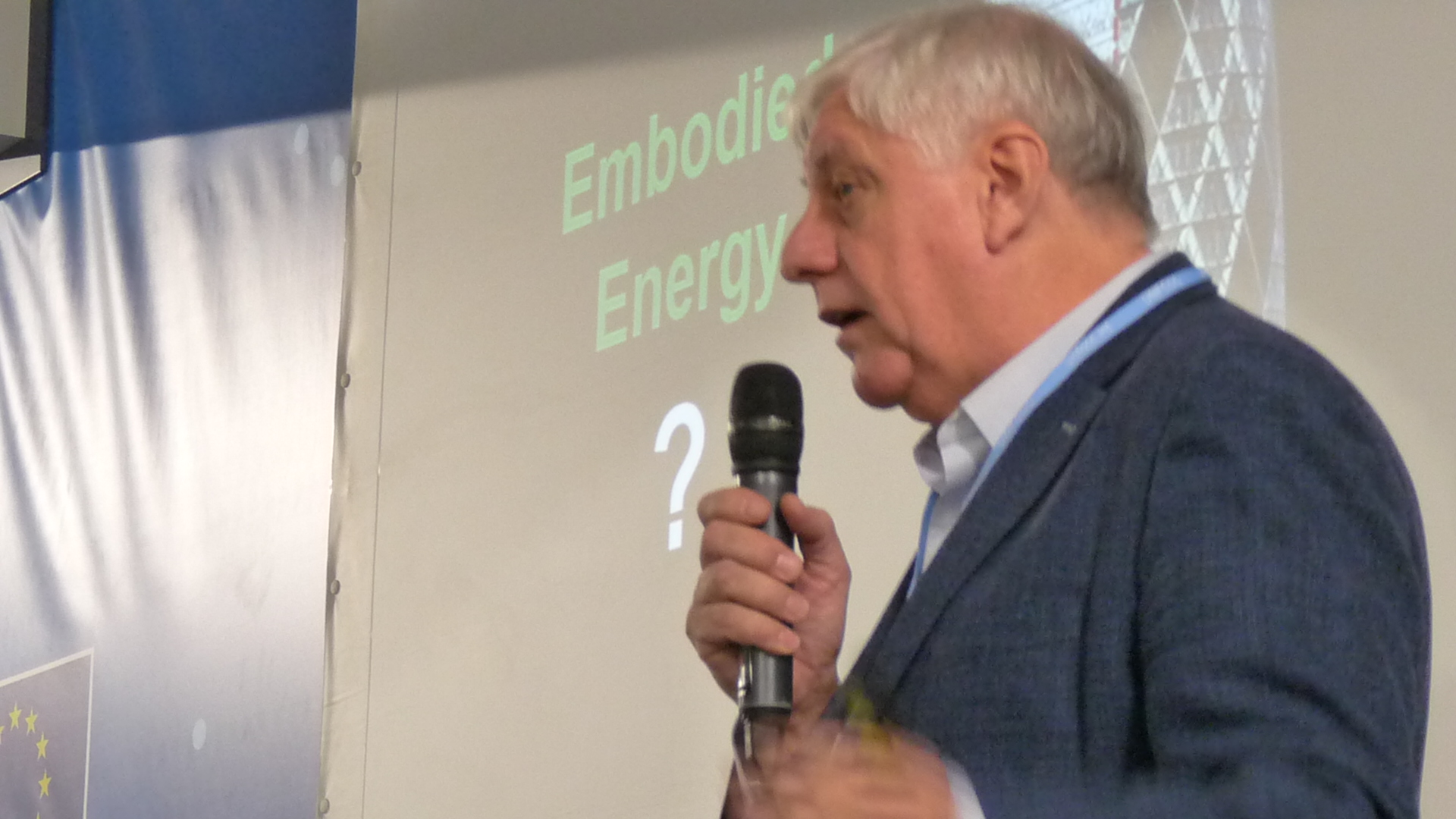
Project managers v PV panels
David Nelson, from Norman Foster's Foster + Partners practice, has just delivered an interesting insight into reducing energy use in buildings.
I don't have time to elaborate further yet – hopefully later – as we're about to go straight into the renewables, decentralization and democracy session, but there is time to note he's already come up with the line of the day.
“After fighting for hours to have photovoltaic panels included on the building, and failing,” he added: “Every project manager from here to China is very skilled at culling those things out of your project.”
Elastic Bertrand
Solar champion Bertrand Piccard has thrown his MEP colleague a lifeline too, by emphasizing that the deforestation occurring worldwide for palm oil plantation causes more damage to the planet than “the poor guy driving his diesel car, or even the miner taking coal”.
However, Piccard – the pilot of the Solar Impulse solar-powered aircraft – is again emphasizing the need to bring renewables to the world's poorest, whether on the streets of Paris or in Africa and the Middle East.
He is not a politician, as he points out, so he is able to speak bluntly and has done so, pointing out that as immigration splits the EU in two, people would not feel the need to migrate from the world's poorest nations if renewable energy could provide them with sustainable, cheap power.
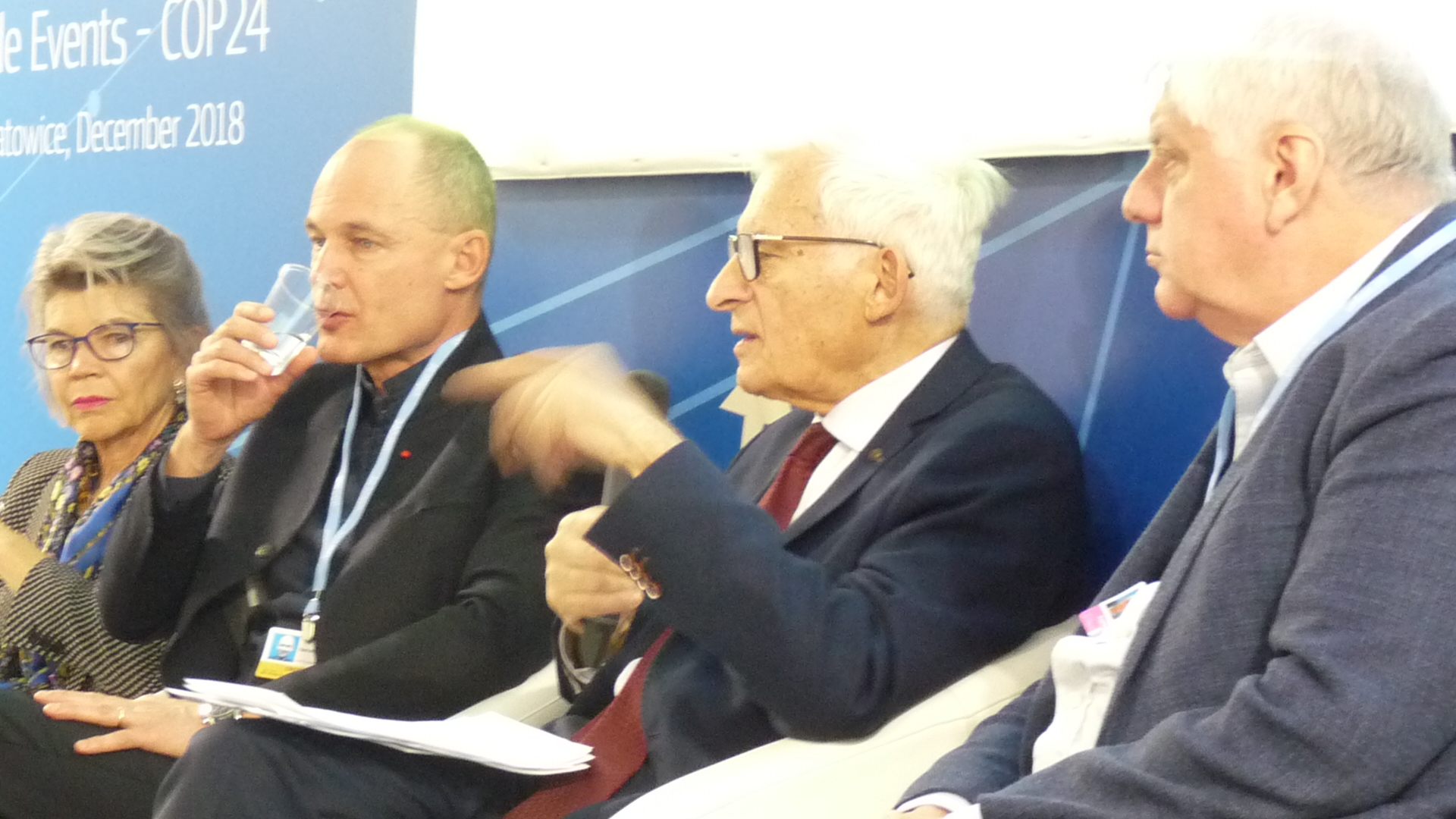
At the coalface
The opening address is none-too-encouraging from a renewables perspective. It was noticeable, perusing the agendas ahead of this meeting, how much emphasis there was on the use of gas and carbon capture in the fight against climate change, reflecting the fact Poland still leans heavily on coal.
Here in the EU pavilion, the first speaker was Jerzy Buzek, an MEP who is a native of Upper Silesia, Katowice's home region.
After speaking of the city's green credentials, he added, of the EU's target of being carbon neutral by 2050: “It's not easy. It's impossible not to emit CO2 in, for example, cement production. It's the same with the steel industry and many, many others … chemical compounds… So, emissions are necessary.
“So, carbon capture and use or carbon capture and storage. Use it [carbon] in a different way and store it underground. It's necessary to emit.”
He then went on to endorse ‘clean coal', adding: “If we want to convince our citizens to be technology neutral. You could use any technology for the next 10 to 15 years, including the use of clean coal technology. We [the EU] should say technology neutrality.”
Good morning to EU
Good morning all, I'll be kicking off the day in the EU pavilion – which I've managed to locate on my second day. There is a talk coming up about ‘Renewables, Decentralization and Democracy'.
After that I will be scurrying across this sprawling complex as fast as my little legs will carry me, to hear from the International Renewable Energy Alliance (REN Alliance) about the success of a 100% Renewable Energy System. Although, given how late the opening remarks have started here in the EU zone, I'll probably have to gatecrash the REN shindig.
